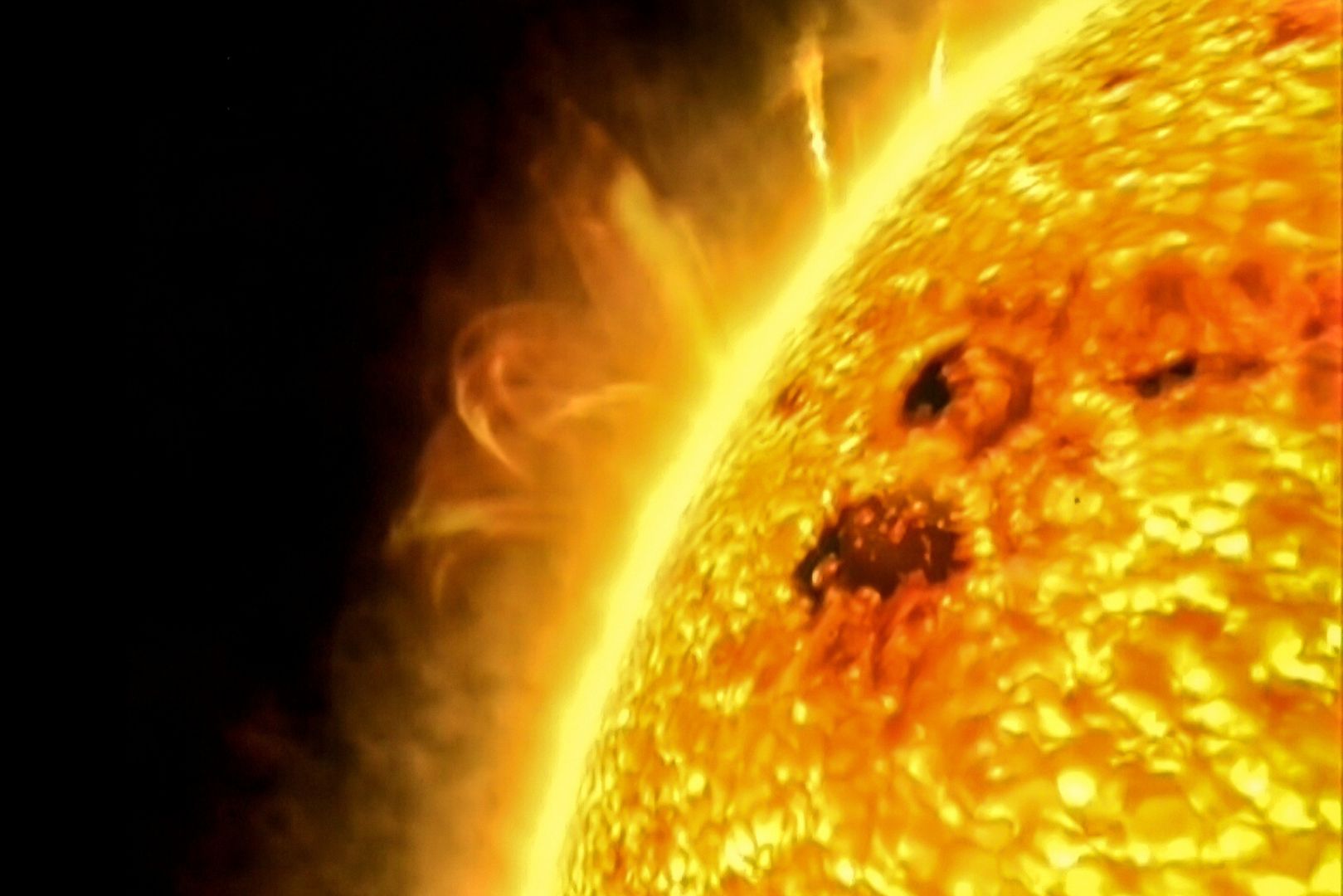The Sun may look like just a bright ball of plasma from here on Earth, but ask any space expert and they’d gladly tell you just how active the Sun truly is. After all, churning out nuclear fusion from within you is no simple feat; with every second that the Sun releases sunlight, it also manages to unleash massive amounts of energy—energy that must somehow leave the star, one way or another.
One such way that it may release pent-up energy is in the form of a coronal mass ejection (CME), or sometimes called a solar storm. When a highly-twisted magnetic field in the Sun’s corona, or the outermost part of its stellar atmosphere, releases energy as it realigns itself into a less-tense form, the burst of electromagnetic energy is accompanied by coronal material. From here, it can escape the star at speeds of up to 3,000 km/s (1,800 mi/s), hitting anything that lies in its path as it travels and spreads outward.
The Sun has had its own fair share of CME scares, giving Earth residents front-row seats into just how powerful a star truly is. One such event, back in the 23rd of July 2012, entailed the Sun releasing a massive CME that luckily missed Earth.
Unfortunately, those lying near the star EK Draconis, situated some 111 light-years from Earth, may not have been so lucky. A team of scientists based in the University of Colorado at Boulder (UCBoulder) revealed their findings of a particularly bad day for anything that was near EK Draconis at the time, as the star in question just released a CME that’s 10 times bigger than anything we’ve ever recorded from a Sun-like star. Their results were published in the journal Nature Astronomy.
The study was helmed by Kosuke Namekata, who with the help of a team of experts found the bizarre case and got into its details. The CME event itself was actually recorded back in April 2020, where they recorded a CME with an estimated mass of released matter ranging in the quadrillions of kilograms. This makes it the largest CME scientists have ever recorded.
In April 5 of the previous year, Namekata and team spotted EK Draconis let out a superflare, or a bright burst of solar radiation that can extend into space. Just 30 minutes later, they spotted the first step of what was the strongest CME ever spotted by science, which moved at an estimated 1.6 million km/h (1 million mi/h). Nearby bodies would have been exposed to the strongest solar storm ever recorded.
The chain of “solar flare before CME” also appears to be the case with our own Sun, as scientists have recorded in several instances the appearance of a solar flare, only to be followed by a CME. In fact, one such event back in 2010 showcased just that, with a solar flare captured in video by an orbiting solar satellite, only to be followed by a CME that blasted Earth with a geomagnetic storm some 31 hours later.
Unfortunately, all this data is not just for the love of the stars, as “[this] kind of big mass ejection could, theoretically, also occur on our sun,” according to co-author and UCBoulder astrophysicist Yuta Notsu. “This observation may help us to better understand how similar events may have affected Earth and even Mars over billions of years.”
Luckily for us, these massive CMEs are rare—and even more so for our own Sun, which may have exhibited similar energetic behavior in the past but may not be as energetic today.
Notsu followed: “The atmosphere of present-day Mars is very thin compared to Earth’s. In the past, we think that Mars had a much thicker atmosphere. Coronal mass ejections may help us to understand what happened to the planet over billions of years,” referring to how CMEs may have played a role into how our planetary neighbor lost most of its atmosphere over the billions of years since its formation.
(For more stellar news, read further on the mysterious “propeller star” and why it spins so fast; after that, check out why a particularly bright “star” back in 1181 might have actually been a supernova instead.)
References
- Namekata, K., Maehara, H., Honda, S., Notsu, Y., Okamoto, S., Takahashi, J., Takayama, M., Ohshima, T., Saito, T., Katoh, N., Tozuka, M., Murata, K. L., Ogawa, F., Niwano, M., Adachi, R., Oeda, M., Shiraishi, K., Isogai, K., Seki, D., … Shibata, K. (2021). Probable detection of an eruptive filament from a superflare on a solar-type star. Nature Astronomy, 1–8. https://doi.org/10.1038/s41550-021-01532-8
- Space Weather Prediction Center. (n.d.). Coronal mass ejections. National Oceanic and Atmospheric Administration. Retrieved 15 December 2021, from https://www.swpc.noaa.gov/phenomena/coronal-mass-ejections
- University of Colorado at Boulder. (2021, December 9). A young, sun-like star may hold warnings for life on Earth. EurekAlert! https://www.eurekalert.org/news-releases/937013











